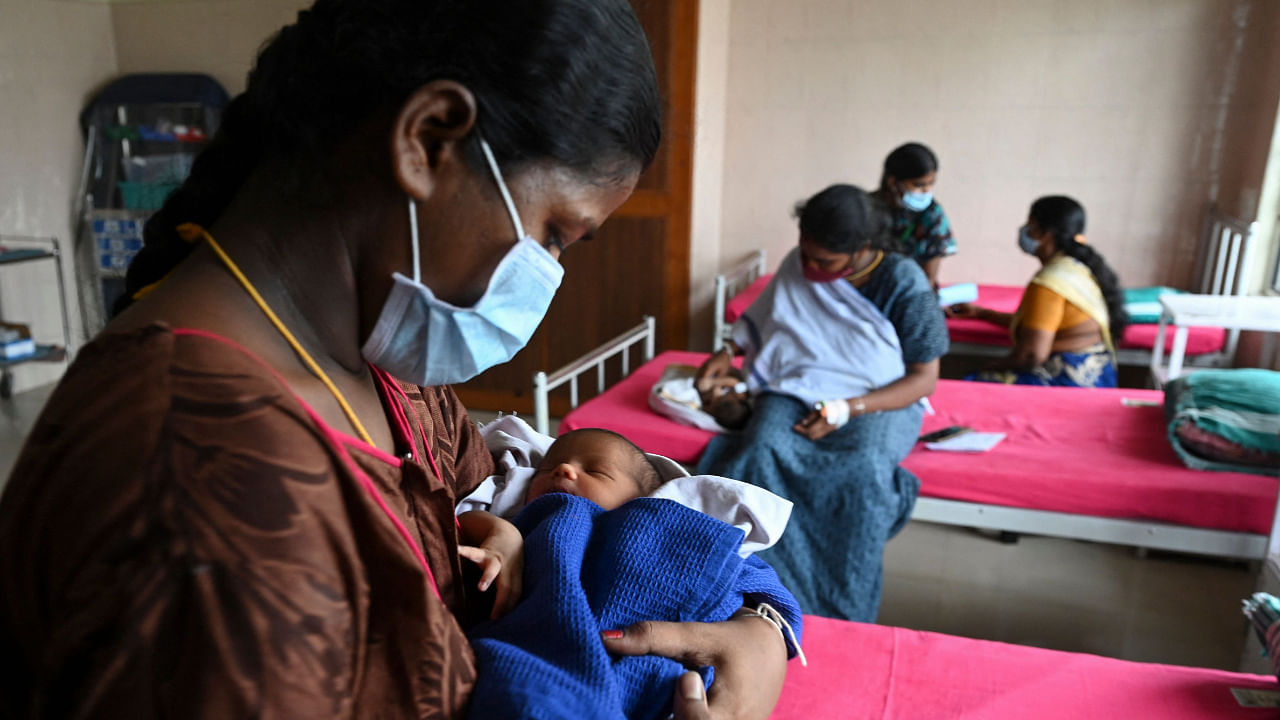
India’s child mortality rate has improved further bringing the country closer to achieving the UN sustainable development goal on child health with a new official report showing an infant mortality rate of 28 per 1000 live births, neonatal mortality of 20 and under-5 mortality rate of 32.
The infant mortality rate records a consistent decline – from 39 in 2014 to 33 in 2017 and further to 28 in 2020. Both under-five mortality rate and neonatal mortality rate exhibit similar patterns.
Half a dozen states have achieved the SDG target of having only 12 or fewer neonatal deaths per 1000 births by 2030. Kerala tops the list with only four such deaths followed by Delhi (9), Tamil Nadu (9), Maharashtra (11), Jammu and Kashmir (12) and Punjab (12).
Eleven states have attained the SDGs target of having an under-5 mortality rate of 25 or less by 2030. They are Kerala (8), Tamil Nadu (13), Delhi (14), Maharashtra (18), J&K (17), Karnataka (21), Punjab (22), West Bengal (22), Telangana (23), Gujarat (24), and Himachal Pradesh (24).
“There has been a sustained decline since 2014. India is poised to meet 2030 SDG targets of child mortality with focused interventions, strong Centre-State partnership and dedication of all health workers”, Union Health Minister Mansukh Mandaviya said in a statement.
Sex-ratio-at-birth, however, remains a worry with ten large states reporting a fall when compared with the previous SRS report while for a handful of states including Karnataka, its a downhill journey for the six years since 2014.
Karnataka probably has the worst sex ratio decline trend with the state reporting 935 girls per 1000 boys at birth in 2014-16, but the number dropped to 929 in 2015-17, 924 in 2016-18, 915 in 2017-19 before a marginal improvement in 2018-20 when it became 916.
The only other state with a similar trend is Chhattisgarh, but the numbers are better – 963 in 2014-16 to 958 in 2018-20.
Worryingly a comparison between the 2017-19 and 2018-20 data shows a slide in the sex ratio in as many as ten states – Andhra Pradesh, Assam, Delhi, Jharkhand, Madhya Pradesh, Maharashtra, Odisha, Telangana, Uttarakhand and West Bengal.
Nationally, there is a rise from 904 in 2017-19 to 907 two years later.
"We should be celebrating the birth and growth of girl children as a country. Instead, society has turned regressive with declining sex ratios in many states. It is very concerning. The system should ensure empowering families to have girl children before it is too late," R Giridhara Babu from the Indian Institute of Public Health, Bengaluru, who is not associated with the SRS survey, told DH.
Among other parameters measured, the total fertility rate has come down to 2.0 from 2.3 in 2014, signalling replacement level fertility on a national scale.
